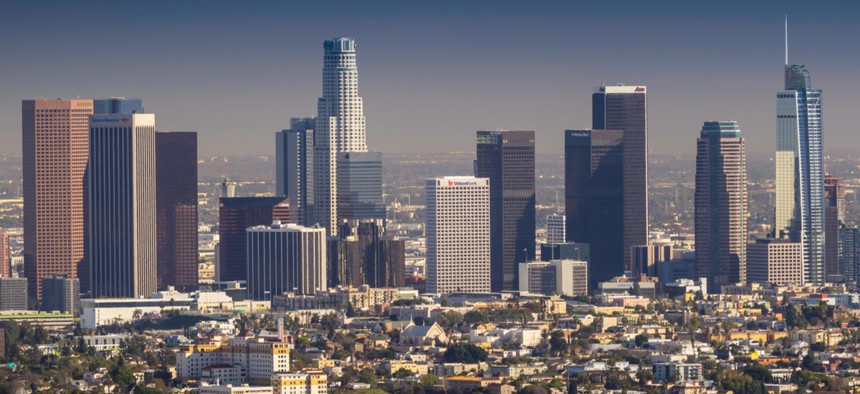Quake Early-Warning App Now Available to Anyone in Los Angeles

Downtown Los Angeles Michael Grass / Route Fifty
Making seismic alerts available to the public has been a priority for Mayor Eric Garcetti.
The development of the ShakeAlert earthquake-early warning network on the West Coast has reached another milestone: Los Angeles residents now have a publicly available app that will relay seismic alerts to smartphones and other devices for those who download it.
Making quake alerts more accessible to the public has been a priority for Mayor Eric Garcetti, who in his 2017 State of the City address called for the development of an earthquake early-warning app by the end of 2018 as part of his agenda to improve L.A.’s resiliency and quake readiness.
The new app only delivers alerts for quakes of at least a magnitude of 5.0 that will impact Los Angeles County.
In November 2017, the L.A. Mayor’s Office of Public Safety issued a request for proposal, which stipulated that the system be open source, allowing other jurisdictions to customize and improve the tool to relay alerts. In June 2018, the L.A. City Council approved a $300,000 contract with AT&T to design and build the app, which has been beta tested by L.A. city employees in recent months.
As the Los Angeles Times reported Wednesday, Garcetti’s office is scheduled to officially unveil the ShakeAlert app on Thursday morning after quietly publishing the app on New Year’s Eve.
The alerts generally work like this: Once a network of seismometers detects and pinpoints the epicenter of a major quake, the system can relay an alert ahead to population centers faster than damaging seismic waves can travel. The amount of advance-warning time before the serious shaking reaches recipients depends on their distance from the quake’s epicenter and the speed of the seismic network to detect and relay the alert.
When tied into infrastructure, earthquake early-warning technology can automatically slow or stop moving trains, close water valves, shut down pipelines and send elevators to the nearest floor and open doors.
For some quake scenarios, like the dreaded future Big One on the southern end of the San Andreas Fault, ShakeAlert recipients in L.A. would receive alerts more than 1 minute before the serious seismic waves would reach the city, more than 160 miles away. That’s ample time to find a safer spot to ride out the shaking. On the flip side, L.A. residents would only have a few seconds to react if the epicenter is on one of the many faults that underlie the city itself. The closer the epicenter, the less time there is to relay warnings.
In recent years, the U.S. Geological Survey has worked with major West Coast universities to develop and build out the ShakeAlert network, including expanding the number of seismometers in California, Oregon and Washington state. ShakeAlert applications are being beta tested elsewhere on the West Coast but are not widely available to the public like they now are in Los Angeles.
PREVIOUSLY on Route Fifty:
Michael Grass is Executive Editor of Route Fifty and is based in Seattle.
NEXT STORY: Tampa’s Path to Smart City Status






